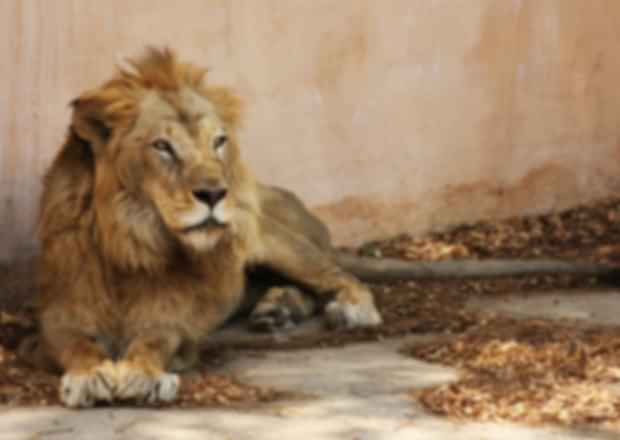Things to know about Jaipur Zoo and its nearby places
Author
Chandru
Updated Date
March 4, 2025
Read
7 minutes

As the name implies, the Jaipur Zoo is located in Jaipur, the capital city of the Indian state of Rajasthan and is spread across a total area of 35 acres. It houses the richest fauna of Rajasthan. Also, it boasts of being the largest zoo as well as one of the finest sanctuaries in the state. The zoological garden is also the fourth largest gharial (an endangered crocodile species) breeding field of the country. There are many things to know about Jaipur Zoo and its nearby places. You can know about those in the coming paragraphs.
As of 2018, the government has decided to build large cages here. Run by the Rajasthan State Government, this garden is one of the famous spots for day picnic trips for schools. You can take your kids and they will get to learn and have a play day at the same time. Research students can visit the garden to get more insights about botanical or zoological studies. Also, they can study animal behaviour or carry on with plant-based studies here.
Jaipur Zoo: History
The Jaipur zoological garden was built by Maharaja Sawai Pratap Singh in the year 1868 as an enlargement of the Ram Niwas Garden. The zoological garden has always remained an instant hit among children and young ones. The Zoological Garden was opened to the public in 1877. Also, it features among the oldest zoos of India and cost around 4 lakhs to establish completely.

White Tiger in Jaipur Zoo
The zoological garden was built with the purpose to preserve and conserve the wildlife that included mammals, birds and reptiles. Based on the animal families that reside within the zoological garden, the garden is divided into two parts. You can find one part for mammals and the second part for reptiles and birds. Established under the Wild Life Protection Act, the Jaipur Zoological Garden authority operates towards wildlife conservation efforts which include various breeding programs carried from time to time for crocodiles, chital and gharials. Currently, the only continuing breeding program is the gharial breeding.
Jaipur Zoo: Major attractions
Below are some of the things to know about Jaipur Zoo and its major attractions.
Gharial Breeding Farm
The Gharial breeding centre of Jaipur Zoological Garden was built in the year 1999 and remains the fourth largest breeding centre in the country of its kind. Also, this is an endangered species of the crocodile family.
The Fauna at Jaipur Zoological Garden
Jaipur Zoological Garden houses around 71 species of mammals, birds and reptiles.
Mammals: The Jaipur zoological garden is also loaded with various species of deer, right from spotted deer to barking deer and Hog to Sambar. Additionally, the zoological garden houses carnivores, omnivores as well as herbivores altogether. The carnivores include lions, tigers, leopards, foxes, jackals, hyenas, foxes, black panthers, wolves and Indian civets. On top of this, you can find that the herbivore population of the zoological garden consists of blackbucks, chinkara, Indian porcupine and rabbits. The omnivores include monkeys, baboons, black bears and many more.
Birds: The avifauna of the zoological garden consists of fascinating birds like Chattering lorries, Peacocks, White peacocks, emus, vultures, pelicans, ducks, parakeets, geese, storks and many more. Also, the garden witnesses the presence of several migratory birds during winters like pink flamingos.
Reptiles: Apart from the gharials, the Jaipur zoological garden is house for several other reptiles in a separate chamber.
Jaipur Zoo: Timings and entrance fees
The zoological garden is open from Wednesdays to Mondays and remains closed on Tuesdays. The timings are different for summer and winter months. During the summer season, the zoo is open between 8:30 AM to 5:30 PM. And during the winter season, it is open between 9:00 AM to 5:00 PM.

Chital in Jaipur Zoo
The entry fees for Indian nationals is Rs 15, and for foreign nationals, the fee is Rs 150.
Jaipur Zoo: Best time to visit
You can experience the Jaipur zoological garden to the fullest during the winter months. This would be between October to March when the weather is relatively pleasant.

Wolf in Jaipur Zoo
Jaipur Zoo: Places to visit nearby
Ram Niwas Garden
The best feature about the location of Jaipur zoological garden is its location within the premises of Ram Niwas Garden. This, in turn, makes it easier for the visitor to explore the beautiful landscaped gardens at leisure. You can also spend quality time with your family.
Albert Hall Museum
Built-in an architectural mixture of English and North India, Albert Hall Museum is located very close to the Zoological Garden. Also, a visit to this museum becomes mandatory as it houses a rich collection of Rajasthani as well as colonial history.
Bapu Bazar
No visit to Rajasthan is complete without shopping for traditional Rajasthani memorials. One can purchase shoes and garments and buy all these at steal prices at Bapu Bazar. Also, if you are a shopping enthusiast and are a master of bargaining skills, Bapu Bazar is the right place.
Also read: Best Bazaars to visit when you are in Jaipur – Shopping in the Pink City
Birla Mandir
Also known as the Laxmi Narayan Temple, the white marble temple stands tall with the Aravalli hills as its backdrop. Even if you are not very spiritual, you can visit the temple for its intricate marble carvings on the pillars and walls.
City Palace
The seat of the former Kachwaha dynasty and present residence of the Jaipur Royal Family, City Palace is a must-visit to have a glimpse of how the royals live. Book a guided royal tour and come back with the knowledge of the rich history of one of the leading ruling houses of North India.

City palace in Jaipur
Jaipur Zoo: Location
The Jaipur Zoological Garden is located inside the premises of the Ram Niwas Garden, another famous landmark of the pink city on the Museum Road.
I hope you have thoroughly gone through the things to know about Jaipur Zoo. If you wish to explore the various popular tourist attractions of Jaipur, then book a tour package with Pickyourtrail. We aim at offering these packages at affordable prices to facilitate a hassle-free vacation to the pink city. So, what are we waiting for? Pack your bags and explore the pink city with your loved ones.
Indian Tourism Useful Resources
Andhra Pradesh Tourism | Uttarakhand Tourism | Sikkim Tourism | Andaman Nicobar Tourism | Rajasthan Tourism | Goa Tourism | Lakshadweep Tourism | Telangana Tourism | Meghalaya Tourism | Kashmir Tourism
Places to Visit Useful Resources
Places to Visit in Uttarakhand | Places to Visit in Goa | Places to Visit in Kashmir | Places to Visit in Rajasthan| Places to Visit in Sikkim | Places to Visit in Andaman Nicobar | Places to Visit in Meghalaya | Places to Visit in Andhra Pradesh | Places to Visit in Lakshadweep | Places to Visit in Telangana
Things to do Useful Resources
Things to do in Goa | Things to do in Andaman Nicobar | Things to do in Kashmir | Things to do in Lakshadweep | Things to do in Sikkim | Things to do in Meghalaya | Things to do in Rajasthan | Things to do in Uttarakhand | Things to do in Andhra Pradesh | Things to do in Telangana
Best Time to Visit Useful Resources
Best Time to Visit Kashmir | Best Time to Visit Andaman Nicobar | Best Time to Visit Goa | Best Time to Visit Sikkim | Best Time to Visit Rajasthan | Best Time to Visit Lakshadweep | Best Time to Visit Meghalaya | Best Time to Visit Uttarakhand | Best Time to Visit Andhra Pradesh | Best Time to Visit Telangana
Recommended articles for you
Discover Packages


Need help in planning?
Talk to our Travel Experts






























